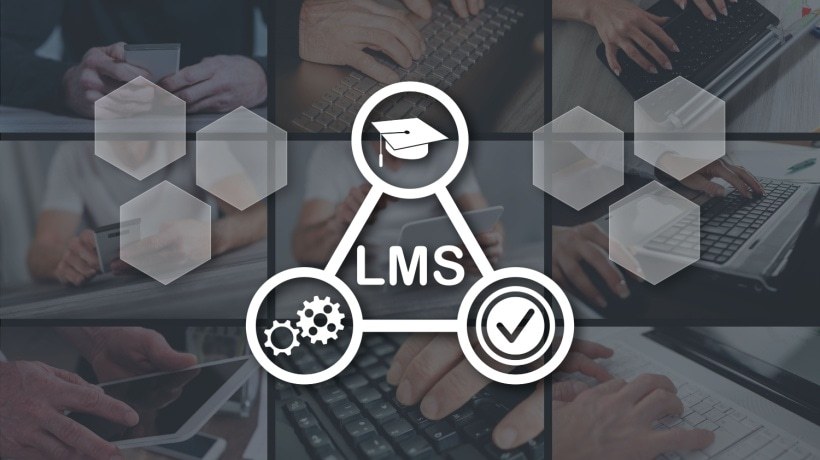6 LMS White-Labeling Features To Look For
If you walk around your local grocery store, you’ll notice certain package shapes seem universal. At the factory level, these generic packs arrive in all-white (or in a single unprinted color). Product manufacturers then add their own printed or engraved labels. That’s why branding is sometimes called white-labeling. In an online setting, this is expressed via brand guidelines on font, color, size, and so on. When you buy an LMS, you want to be sure it has the tools and options that let you label your brand. What are some of the top LMS white-labeling features you should look for in your new online training platform?
1. Domain Selection
When you buy a hosting package, you sometimes get a free domain and security certificates (SSL/TLS). The selection of the domain itself is up to you. This is the main benefit of LMS. When you sign up with SaaS, you may end up with a platform-based domain. So, it could be *yourcompany.squarespace.com* or *yourbrand.webworks.me*. While that extension offers additional protection and services, it will never feel fully yours. Instead, design your LMS character, look, and feel. Then buy a domain that is undeniably white-labeled. It doesn’t have to be a tier-one domain. Sometimes, a suffix or extension can be far more personalized. Some LMS platforms even offer this perk as part of the package.
2. Themes And Icons
Human beings are all about the little things, even though we’re rarely aware of them. When you’re shopping for a car, shoes, or even kitchenware, you’ll start with price, quality, and reviews. But somewhere along the way, you’ll opt for an item in your favorite color. Within your LMS, this can be a factor too. Something as simple as the choice of font or background color can influence performance. The LMS should let you plug in your brand palette in all its (limited) glory. It should then allow users to customize their LMS profile. Apply themes and imagery relevant to your brand persona, and to your organizational mission and vision. At a glance, anyone familiar with your brand should know who owns that LMS.
3. UI And Messaging
People who spend a lot of time online know the frustration of clunky, glitchy user experiences. Some netizens are early adopters, so they’ll put up with the kinks and crashes of beta versions. Most of us would rather wait until everything is ironed out, even if we’ll be late to the onboarding party. Using external software exposes you to these snafus. So, with your LMS, both for training and admin purposes, emphasis is on consumer comfort. Look for a user experience and interface that are a pleasure to use. Internal efficiency makes your team proud to bear your name. And if their LMS usage is pleasant, it boosts their moods, enhances their efficiency, and makes their jobs easier. This positive attitude will be extended to customers and business partners, benefiting the organization on a holistic level.
4. Certificate Design
Having a piece of paper—even a digital one—that measures training success is an ego boost. It’s also a good accountability tool. Depending on your needs, you could develop a basic completion certificate or one that’s stamped and approved by regulatory boards. There are millions of generic certificate templates, but they should only ever be a starting point. Get LMS that can tweak these templates into beautiful, functional, clean certificates which are uniquely yours. They should hold a place of pride in employees’ inboxes because they’re that well designed. After all, they’re a label of skill and professionalism, both at individual and corporate levels.
5. In-House Social Networks
Developing an intra-social network can feel like reinventing the wheel. How often have you heard "It’s like Facebook, but for doctors/lawyers/dancers/ *insert job title*? But mimicking the good bits of these platforms in house is a great way to leave out the bad. Your employees can restrict their "social media activity" to a corporate context. Their data is protected, and it makes a handy tool for internal communication. This applies both for training scenarios and picking Secret Santa. Ensure the LMS you select can supply that creative space. It should also make it easy to delist colleagues who leave the firm. You may still love them, but you don’t want them accessing social trade secrets.
6. Logo Integration
Of course, these essential LMS white-labeling features list wouldn’t be complete without good old brand integration. You must be able to incorporate your logo into the online training materials, including the dashboard. Especially if you plan to sell the course and want to build your brand presence. People need to know who stands behind the course (and where they can find more of your offerings).
Conclusion
In the words of a certain pop icon, if you like it, then you need to put a ring on it. White-labelling your LMS makes it fully yours. It feels familiar to your staff, so they embrace it and own it. It’s no longer just some generic software, and in this way, branding builds buy-in. So how can you "put a ring" on your LMS? Pick a personalized domain for your hosting package. Apply logos, brand colors, themes, and icons. Adjust the user interface and tone of messaging to fit your brand persona. Your email addresses should have a personal touch too, as should course certificates. Finally, instead of relying on public networking platforms, build your own.
Find a system that provides all these LMS white-labeling features and fits into your price range. Our online directory showcases the top platforms on the market today. You can even review their ratings and compare up to three solutions to see how they stack up against the competitors.









